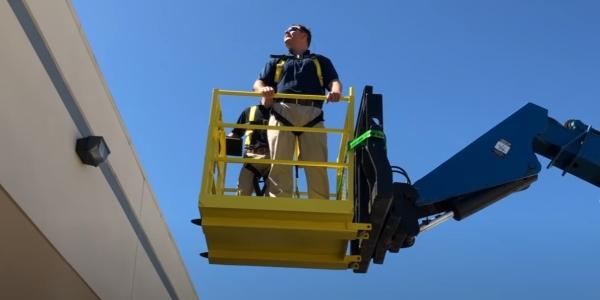UP TO THE MINUTE
Which is More Cost Effective? Standing Seam or Exposed Fastener Panels

By McElroy Metal.
While standing seam typically costs 50% more than an exposed fastener system, the answer isn’t always as straightforward as a homeowner might think. Learn what variables can impact this answer.
If you work with metal roofing, it is likely that a customer at one point has asked you to compare the pricing between metal panels being installed with exposed verses concealed fasteners. At McElroy Metal, we know that while this question on the surface seems simple, quite a few factors impact the answer you give a homeowner. Project location, panel width and gauge, roof geometry and even paint systems can all change the ultimate cost of metal roofing systems.
Factors impacting the cost difference
Numerous factors contribute to the roughly 50% cost difference between exposed and concealed fastener panels. To help broaden your understanding, let’s unpack a few of the most significant factors.
-
Labor. Concealed fastener panels typically cover 16-18” whereas exposed fastener panels routinely cover 36”. That simple difference means the panel manufacturer and the installer experience significantly reduced efficiency when working with concealed fastener panels.
-
Transportation costs. Exposed fastened panels can be nested and lay flat on the trailer for shipment. This approach maximizes the amount of product that fits on a load. In contrast, standing seam panels ship on their side in wooden crates to ensure they arrive undamaged. As an example of this impact, we can typically ship 40,000 pounds of exposed fastener product on a load, but we might only be able to fit 10,000 pounds of standing seam panels on the same type of trailer.
-
Packaging. As mentioned previously, packaging requirements vary greatly between the panel styles. Concealed fastener panels require the construction of solid wooden crates. Consequently, part of the 50% estimated upcharge for standing seam style panels is rooted in the additional labor and cost of supplies demanded by the enhanced packaging.
-
Additional factors. Many other factors contribute to the higher cost of concealed fastener panels. If you’d like to learn more about this topic, check out our earlier article, which focuses on this topic.
Benefits of concealed fastener systems
While the roughly 50% upcharge might feel substantial, standing seam systems offer numerous benefits over an exposed fastener system. Since no exposed fasteners are used to attach the panels, concealed fastener panels provide a much lower opportunity for leaks caused by improper fastener installation.
Additionally, while the neoprene washers on the fasteners have greatly improved, ultraviolet rays from the sun can still cause them to shrink and crack over time (generally at least 20 years). When this occurs, water can infiltrate the building. It’s important to note that this problem is easily repaired by simply removing and replacing the fasteners. Consequently, if you’re not opposed to some light maintenance every 20-30 years, the upcharge to move to a concealed fastener panel may not be cost-effective for you.
Ultimately, only you can decide if the 50% upcharge to move from exposed to concealed fastened panels makes sense for you.
Learn more about McElroy Metal in their directory or visit www.mcelroymetal.com.
Original article source: McElroy Metal



















Comments
Leave a Reply
Have an account? Login to leave a comment!
Sign In